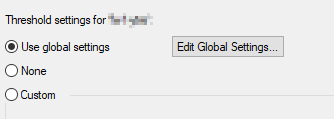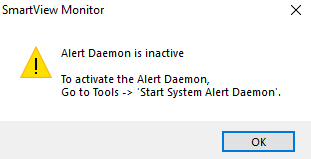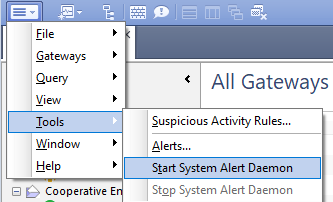- Products
Network & SASE IoT Protect Maestro Management OpenTelemetry/Skyline Remote Access VPN SASE SD-WAN Security Gateways SmartMove Smart-1 Cloud SMB Gateways (Spark) Threat PreventionCloud Cloud Network Security CloudMates General CloudGuard - WAF Talking Cloud Podcast Weekly ReportsSecurity Operations Events External Risk Management Incident Response Infinity AI Infinity Portal NDR Playblocks SOC XDR/XPR Threat Exposure Management
- Learn
- Local User Groups
- Partners
- More
This website uses Cookies. Click Accept to agree to our website's cookie use as described in our Privacy Policy. Click Preferences to customize your cookie settings.
- Products
- AI Security
- Developers & More
- Check Point Trivia
- CheckMates Toolbox
- General Topics
- Products Announcements
- Threat Prevention Blog
- Upcoming Events
- Americas
- EMEA
- Czech Republic and Slovakia
- Denmark
- Netherlands
- Germany
- Sweden
- United Kingdom and Ireland
- France
- Spain
- Norway
- Ukraine
- Baltics and Finland
- Greece
- Portugal
- Austria
- Kazakhstan and CIS
- Switzerland
- Romania
- Turkey
- Belarus
- Belgium & Luxembourg
- Russia
- Poland
- Georgia
- DACH - Germany, Austria and Switzerland
- Iberia
- Africa
- Adriatics Region
- Eastern Africa
- Israel
- Nordics
- Middle East and Africa
- Balkans
- Italy
- Bulgaria
- Cyprus
- APAC
CheckMates Fest 2026
Join the Celebration!
AI Security Masters
E1: How AI is Reshaping Our World
MVP 2026: Submissions
Are Now Open!
What's New in R82.10?
Watch NowOverlap in Security Validation
Help us to understand your needs better
CheckMates Go:
Maestro Madness
Turn on suggestions
Auto-suggest helps you quickly narrow down your search results by suggesting possible matches as you type.
Showing results for
- CheckMates
- :
- Products
- :
- General Topics
- :
- Pssst something is wrong
Options
- Subscribe to RSS Feed
- Mark Topic as New
- Mark Topic as Read
- Float this Topic for Current User
- Bookmark
- Subscribe
- Mute
- Printer Friendly Page
Turn on suggestions
Auto-suggest helps you quickly narrow down your search results by suggesting possible matches as you type.
Showing results for
Are you a member of CheckMates?
×
Sign in with your Check Point UserCenter/PartnerMap account to access more great content and get a chance to win some Apple AirPods! If you don't have an account, create one now for free!
- Mark as New
- Bookmark
- Subscribe
- Mute
- Subscribe to RSS Feed
- Permalink
- Report Inappropriate Content
Pssst something is wrong
High CPU usage during periods you didn't know about? A colleague installed a firewall policy without you knowing it and the phone starts to ring? Logs filling up disk space? You can configure thresholds so that an automatic sending of SNMP trap or email notifies you when the above happens. This will also help you to start at the right moment troubleshooting during a performance incident with top and cpview commands. Have you configured this in your environment?
This example will show you how to configure email notifications.
Note: To receive mail alert you need to have an SMTP server configured with "Mail Relay" where you allow IP-address of your mgmt server and "No Authentication", for instance your internal Exchange server. Be aware also that your management server have to be allowed to send mail to this mail server in your security policy. That means also to have a route from mgmt to mail server.
1. Configure tresholds on gateway(s):
System Alerts can be customized per network object, or they can be set to comply with the global System Alert attributes.
Logs & Monitor > New tab > Tunnel & User monitoring to open SmartView Monitor.

Under All Gateways overview, right-click on an object and select Configure tresholds.

Three options here to choose between:

Which one to choose? Edit Global Settings lets you define a set of default system alert parameters (such as CPU utilization) for each installed product and determine the action to be taken (such as log or alert) when that parameter is reached. You might have only a cluster where this option is fine but for others that have many gateways, the Custom on each object might be a better option since you could tune it different. In this example we will use Custom.
For CPU usage, free disk space and firewall policy install time you could set something like this:


System Alert Monitoring Mechanism
Check Point Security Management server has a System Alert monitoring mechanism that takes the System Alert parameters you defined and checks if that System Alert parameter has been reached. If it is reached, it activates the action defined to be taken. If the system alert daemon is not started you will get this message

In your SmartView Monitor window select to start as shown below.

2. Setup mail alerts for configured tresholds:
Open Global properties in your SmartConsole and go to Alerts

The internal_sendmail is an internal Check Point command (built-in into FWD daemon) that directs the Check Point Alerts Daemon on the Security Management Server / Domain Management Server to send an e-mail, using the specified arguments. It does not require a mail server or mail client to be installed on the Security Management Server / Multi-Domain Security Management Server.
Select a checkbox next to run mail alert script.

Use this syntax:
internal_sendmail -s "SUBJECT" -t IP_ADDRESS_of_SMTP_SERVER [-f SENDER_E-MAIL@DOMAIN] RECIPIENT1_E-MAIL@DOMAIN [RECIPIENT2_E-MAIL@DOMAIN ...]
The above syntax did not work for me, dont quite know why. I had to use this instead:
$FWDIR/bin/sendmail -s "SUBJECT" -t IP_ADDRESS_of_SMTP_SERVER [-f SENDER_E-MAIL@DOMAIN] RECIPIENT1_E-MAIL@DOMAIN [RECIPIENT2_E-MAIL@DOMAIN ...]
Example:
$FWDIR/bin/sendmail -s "MySubject" -t 192.168.20.30 -f fwmgmt@example.com sysadmin@example.com managers@example.com
Note: The e-mail subject must always be enclosed within quotation marks. Multiple recipients must be separated by a space character at the end.
Publish and install security policy to see if you get an email alert which will look like this:

4 Replies
- Mark as New
- Bookmark
- Subscribe
- Mute
- Subscribe to RSS Feed
- Permalink
- Report Inappropriate Content
Nice post.
My configured mail script is below, working successfully.
internal_sendmail -s 'Alert_CP' -t 10.X.X.X -f sender@example.com recipient@examplerec.com
- Mark as New
- Bookmark
- Subscribe
- Mute
- Subscribe to RSS Feed
- Permalink
- Report Inappropriate Content
Thanks Huseyin. Don't know why it didn't work for me although the internal_sendmail should correspond to $FWDIR/bin/sendmail.
- Mark as New
- Bookmark
- Subscribe
- Mute
- Subscribe to RSS Feed
- Permalink
- Report Inappropriate Content
Hi ED,
Great summary of this alert feature, thank you very much for it.
Now, does someone know what the difference is, when I set under the gateway object - Logs - Storage the "Measure free disk space" and issue an alert there?
Are these two procedures completely independend to each other?
Thanks,
Peter
- Mark as New
- Bookmark
- Subscribe
- Mute
- Subscribe to RSS Feed
- Permalink
- Report Inappropriate Content
Hi ED,
Great summary of this alert feature, thank you very much for it.
Now, does someone know what the difference is, when I set under the gateway object - Logs - Storage the "Measure free disk space" and issue an alert there?
Are these two procedures completely independend to each other?
Thanks,
Peter
Leaderboard
Epsum factorial non deposit quid pro quo hic escorol.
| User | Count |
|---|---|
| 17 | |
| 12 | |
| 10 | |
| 10 | |
| 5 | |
| 2 | |
| 2 | |
| 2 | |
| 2 | |
| 2 |
Upcoming Events
Thu 08 Jan 2026 @ 05:00 PM (CET)
AI Security Masters Session 1: How AI is Reshaping Our WorldThu 22 Jan 2026 @ 05:00 PM (CET)
AI Security Masters Session 2: Hacking with AI: The Dark Side of InnovationThu 12 Feb 2026 @ 05:00 PM (CET)
AI Security Masters Session 3: Exposing AI Vulnerabilities: CP<R> Latest Security FindingsThu 26 Feb 2026 @ 05:00 PM (CET)
AI Security Masters Session 4: Powering Prevention: The AI Driving Check Point’s ThreatCloudThu 08 Jan 2026 @ 05:00 PM (CET)
AI Security Masters Session 1: How AI is Reshaping Our WorldThu 22 Jan 2026 @ 05:00 PM (CET)
AI Security Masters Session 2: Hacking with AI: The Dark Side of InnovationThu 26 Feb 2026 @ 05:00 PM (CET)
AI Security Masters Session 4: Powering Prevention: The AI Driving Check Point’s ThreatCloudAbout CheckMates
Learn Check Point
Advanced Learning
YOU DESERVE THE BEST SECURITY
©1994-2025 Check Point Software Technologies Ltd. All rights reserved.
Copyright
Privacy Policy
About Us
UserCenter


